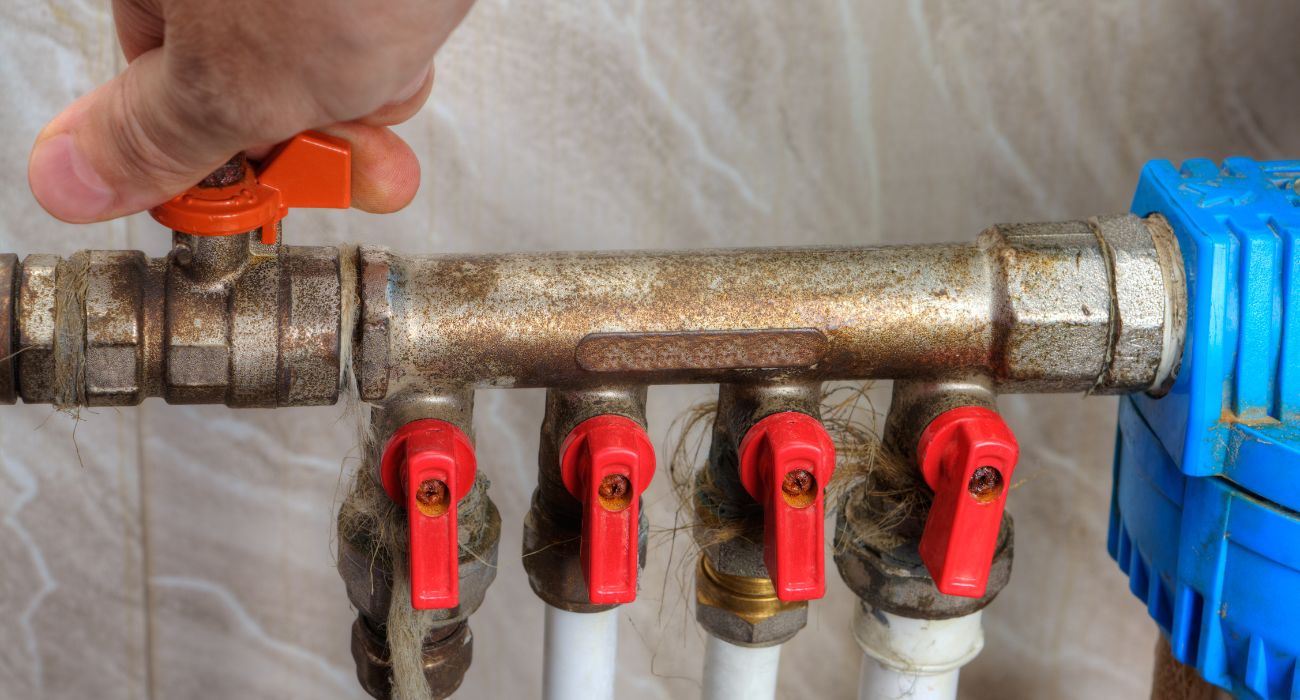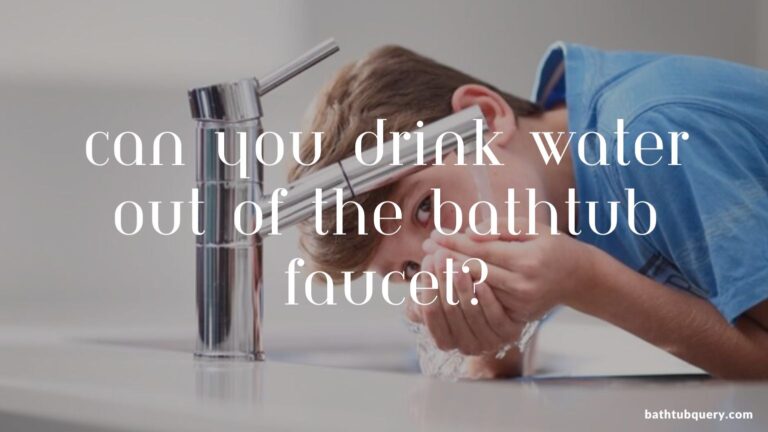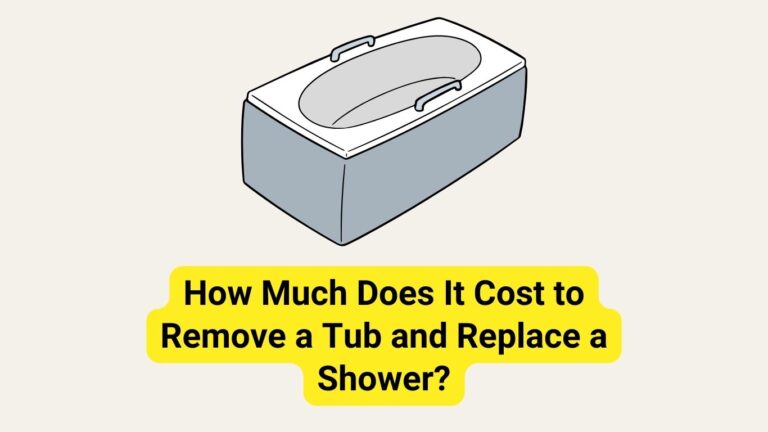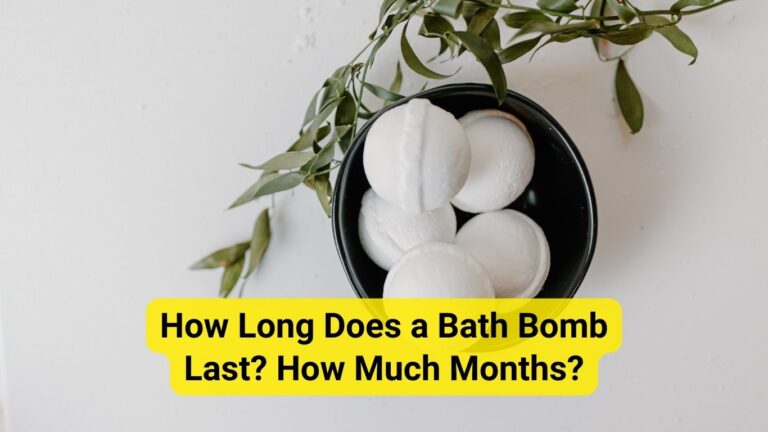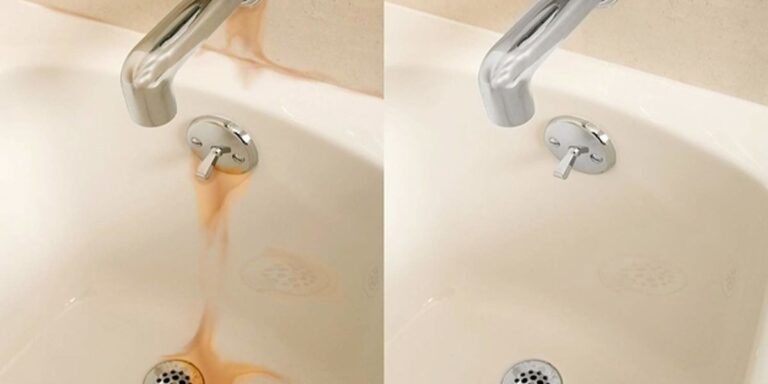Do Bathtubs Have Shut Off Valves? How to Install?
Frustrating situations like these show why having shut off valves is so important for controlling water flow in bathtubs. These handy devices give you the ability to turn the water on and off right at the fixture underneath the tub.
But do all bathtubs actually have separate shut off valves installed? If your tub doesn’t have them, is it possible for a homeowner to add shut off valves themselves? Let’s take an in-depth look at bathtub shut off valves – what they are, why you need them, signs that your tub is missing them, and how to install shut off valves if your bathtub doesn’t already have them.
Find out the Best Shut Off Valve For Main Water Line
Do Bathtubs Have Shut Off Valves?
Most bathtubs have shut off valves behind an access panel, usually located on the wall near the tub. These valves allow you to turn the water on and off specifically for the tub without affecting the rest of the plumbing.
What Exactly is a Bathtub Shut Off Valve?
Before we get into whether all tubs have them, let’s start with the basics – what is a bathtub shut off valve? In simple terms, it’s a device that allows you to stop the flow of water specifically to the tub and shower fixtures.
You know that main shut off valve for the whole house, often located near the water meter? A bathtub shut off valve lets you isolate just the tub’s water supply line, so you can turn it on and off separately from the rest of the house.
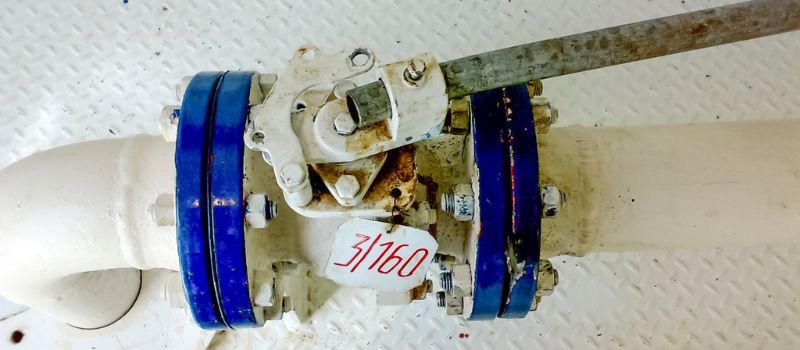
These valves are installed under the tub on the hot and cold water supply lines. You’ll usually find them behind an access panel or beneath the tub in the crawl space if it’s raised off the floor. By turning the shut off valves clockwise, you stop the flow of hot and cold water to the tub’s faucet and showerhead only.
“Having shut off valves for your bathtub is like giving yourself a remote control for the water.”
So in summary, bathtub shut off valves are control devices mounted on the tub’s hot and cold water lines specifically for turning on or off water flow only to the bathtub fixture. No more affecting the entire house’s water every time you need to mess with your tub!
Why are Bathtub shut-off valves so important?
Being able to isolate and control the water supply to your bathtub serves some very practical purposes. Here are key reasons why bathtub shut off valves are so important:
Emergency Water Shut Off
Shut off valves give you the power to quickly turn off the water in emergency situations before flooding and water damage occur. For example, if your tub spout starts spewing water uncontrollably, you can run under and shut off the valves in seconds. Or if a supply line ruptures, you can stop the water right at the source.
Repairs
Anytime you need to replace faucet washers, tub spouts, showerheads, or make other repairs, you’ll need to shut off the water locally first. Shut off valves under the tub allows you to do this without cutting off water to the whole house.
Maintenance
For cleaning and maintaining the tub, it’s convenient to have dedicated shut-offs so you can work safely without water spraying out unexpectedly.
Isolate Issues
If you have problems with water flow or temperature in the tub, the issue is likely isolated to the fixture itself. Having shut offs under the tub helps you quickly diagnose and fix the problem.
Control Water Use
Easily turn off the tub’s water when it’s not being used for periods of time. This can help conserve water.
As you can see, having the ability to stop the flow of water right at the bathtub provides practical control and convenience. That’s why plumbing codes now require new tub installations to have shut off valves. But what if you have an older tub without them? Keep reading to find out.
Do All Bathtubs Have Shut Off Valves Already?
With how essential bathtub shut off valves are, you would think all tubs already have them. But in fact, some older bathtubs may lack shut off valves, or have valves that no longer function properly.
There are two main factors that determine whether your tub has working shut off valves or not:
Age of the Tub
Older bathtubs, especially those installed more than 20-30 years ago, are less likely to have dedicated shut off valves. Back then, it was common to control tub water flow only via the main house valve.
Building codes have evolved over time to require more safety features. So if you have an older vintage tub, chances are it was installed without shut off valves initially.
“If you have a vintage clawfoot tub or old iron enameled tub, it may lack shut off valves that meet modern code.”
Original Plumbing Configuration
Even some tubs installed as recently as the 1990s and early 2000s may not have shut off valves. The original plumbing configuration dictates what type of control you have.
If the hot and cold supply lines for the tub are spliced directly from the main house water lines without any shut off valves in between, then you don’t have any localized control.
Tub water supply configurations done by DIYers also less commonly include proper shut off valves. So if your tub was installed without permits or professional help, verify it has proper shut offs.
The takeaway? Don’t assume your tub has shut off valves if it’s an older model or was installed DIY-style. But even if it’s lacking, you can remedy that. We’ll cover how shortly. First, let’s go over how you can check for shut off valves.
How Can I Check if My Bathtub Has Shut Off Valves?
Before running underneath your tub with a wrench, there are a few easy ways to check for existing shut off valves non-invasively.
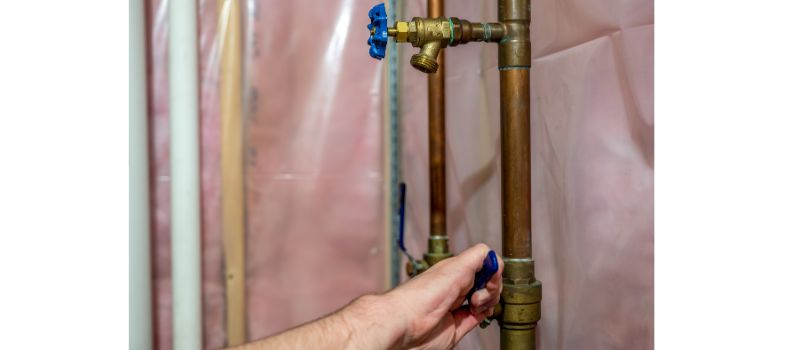
Look for Access Panel
Most tubs with factory installed shut off valves have a small removable access panel built into the wall around the lower tub lip. Typically it’s on the wall opposite the tub drain and faucet.
Reach your hand along the lip around the three sides of the tub wall without the faucet. Feel for a panel that unscrews or pops off, behind which you’ll find the shut off valves.
If you don’t find an access hatch on your tub, that likely means…
No Shut Off Valves
The tub was installed without shut offs if there was no discernible access panel. Even if you see capped pipe fittings beneath the tub, those are likely just supply line connections without integrated shut off valves.
Try to Isolate Tub Water
Attempt to turn off the water flow to just the tub. Turn on the tub, then turn off the main house water line, and see if that stops flow to just the tub or the entire house.
If you can’t isolate the tub water without shutting off the main line, your tub clearly lacks separate shut off valves.
Consult Tub Documents
Check the tub’s installation, operation, and maintenance documents if you have them. Any manuals, warranties, or install specs should indicate if dedicated shut off valves are present.
When in Doubt, Look Underneath
Crawl under the tub with a flashlight and inspect the water supply line connections. Look for obvious integrated shut off valves on the 1/2″ or 3/4″ tub supply lines.
If you see any levers or switches below the tub, they likely control shut off valves even if an access hatch isn’t installed above.
Using these methods, you should be able to determine conclusively whether your bathtub has integrated shut off valves or not. If it doesn’t, don’t worry – they can easily be added.
How to Add Shut Off Valves if Your Tub Lacks Them?
If your investigation confirms your bathtub has no shut off valves, it’s highly recommended you add them. This way you reap all the safety and convenience benefits we discussed earlier.
Here are the basic steps to add shut off valves yourself:
Turn Off House’s Main Water Supply
This first crucial step ensures no water is flowing while you work. Locate the main valve for the house and rotate it clockwise to shut off the water.
Access Tub Supply Lines
With the water off, locate the hot and cold supply lines under the tub that feed water to the tub spout and showerhead. You may need to remove an access panel if present.
Cut Into Each Supply Line
Use a rotary tool or hacksaw to cut into each existing supply line, making sure not to damage the lines. This will allow you to splice in a shut off valve.
Install Shut Off Valves
Splice a shut off valve into each supply line and secure it with compression fittings. Make sure valves are easily accessible for future use.
Turn Water Back On
Reopen the house’s main valve. Check for leaks at shut off valves, then test the valves to ensure proper operation.
“With the right plumbing tools and skills, adding bathtub shut off valves is a relatively easy DIY project.”
Let’s look a little closer at the key steps.
Choosing the Right Shut Off Valve Type
Standard 1/4 turn brass ball valves are ideal for bathtub shut offs. Make sure to get 1/2″ or 3/4″ valves to match your supply lines. Ball valves provide reliable, drip-free operation.
Proper Placement Under the Tub
Mount the shut off valves in an easily accessible spot. They should be high enough off the floor for you to reach them comfortably. Group the valves close together for convenience.
Securing Valves Properly
Compression fittings create a leak-proof seal. Wrap threaded connections with Teflon tape. The joint compound adds extra leak protection. Torque fittings snugly, but don’t overtighten.
Adding an Access Panel
Install a removable access panel measuring at least 12” x 12” to provide a clear opening to the shut off valves underneath. Secure the panel with corrosion-resistant fasteners.
Following proper technique ensures safe, leak-free shut off valve installation. But if the process seems too complicated, don’t hesitate to call in a professional plumber to add shut offs to your existing tub.
Maintaining Your New Bathtub Shut Off Valves
Once you have your lovely new shut off valves installed, you’ll want to maintain them so they continue providing safe, reliable water flow control. Here are some tips:
Periodic Operation
It’s smart to turn your bathtub shut off valves fully open and closed again two or three times a year. This keeps them operating smoothly.
Lubricating O-Rings/Seals
A few small drops of silicone grease or other approved lubricant applied to o-ring seals keep valves turning freely.
Dealing With Corrosion and Rust
Clean off any corrosion, rust, or debris from valve exteriors and moving parts. Replace valves if badly corroded.
Testing for Leaks
Inspect valves and tub connections for drips or leaks when closed. Fix any immediately by tightening fittings or replacing worn valves.
Replace Defective Valves
If a shut off valve becomes stuck, won’t seal fully, or no longer operates properly, replace it. Don’t let faulty valves defeat their safety purpose.
Maintaining your shut off valves ensures you can rely on them to stop water flow in any emergency plumbing situation. Let’s look at a few warning signs that indicate your valves need servicing or replacement.
Hopefully, this detailed look at whether tub shut off valves exist and how to add them clears up any mysteries about controlling water flow in your bathtub. Just remember that a licensed plumber can also handle installing or replacing shut off valves if DIY isn’t your thing. But either way, make sure your tub has this vital capability. Give yourse
- How To Install Non Slip Bathtub Strips? Quick Installation
- How To Stop Bathtub Faucet From Dripping? Quick Guide
- Can You Eat An Orange In A Bathtub?
- Can You Do An Ice Bath In A Bathtub?

William J. Bullock is a licensed plumber with over 15 years of experience installing and repairing bathtubs. He runs his own plumbing company in Greenville and serves residential and commercial clients. William is dedicated to providing honest, transparent advice to help homeowners make informed decisions about their bathroom renovations.
He has established expertise in selecting bathtubs, planning custom installations, diagnosing issues, and completing repairs. William aims to share practical tips and reliable recommendations based on extensive hands-on work. When he isn’t on a job site, William enjoys spending time with his family and volunteering at local community events. He takes pride in delivering quality service and enjoys helping people upgrade their homes.

